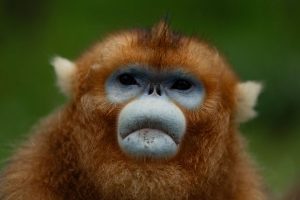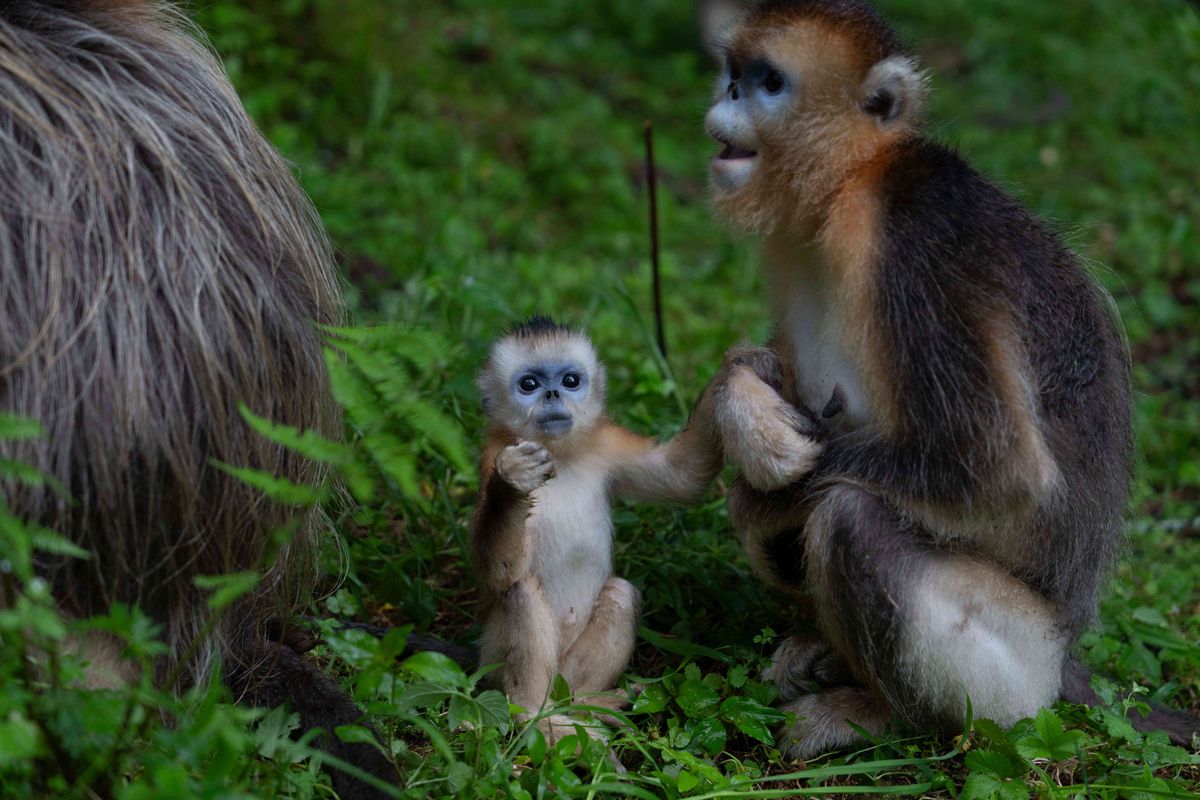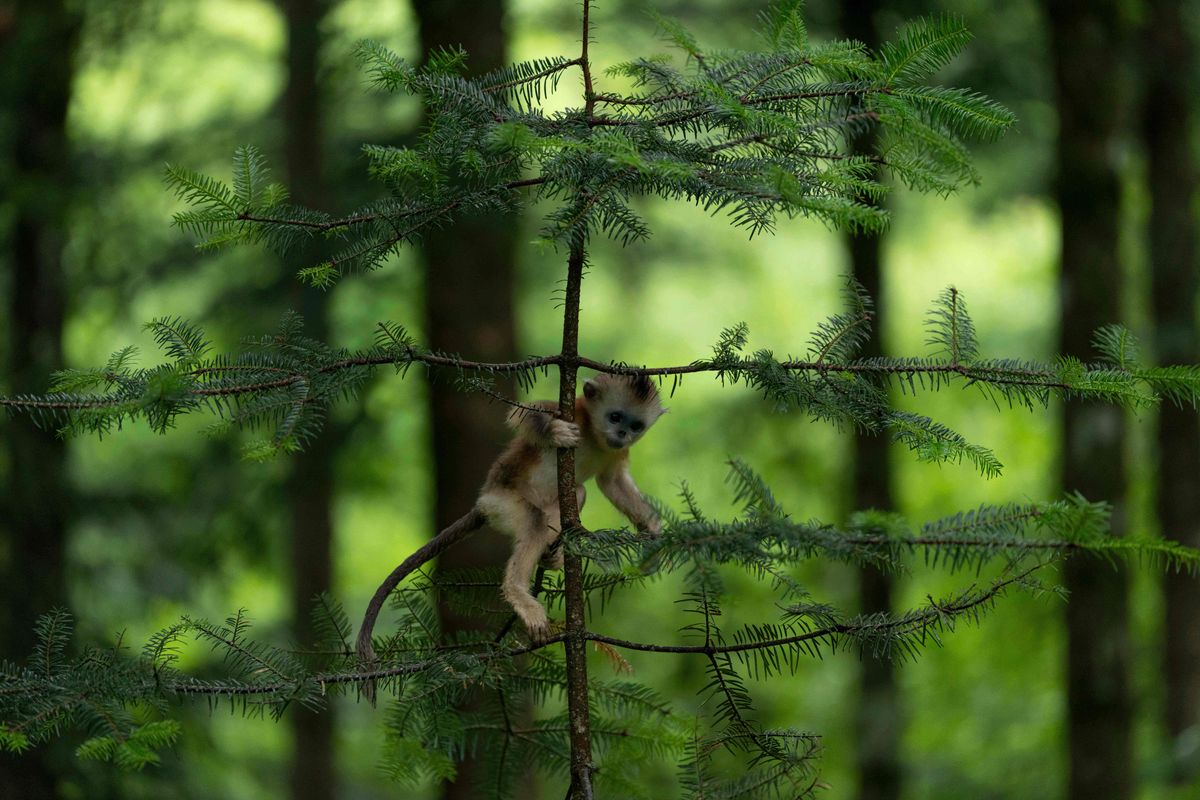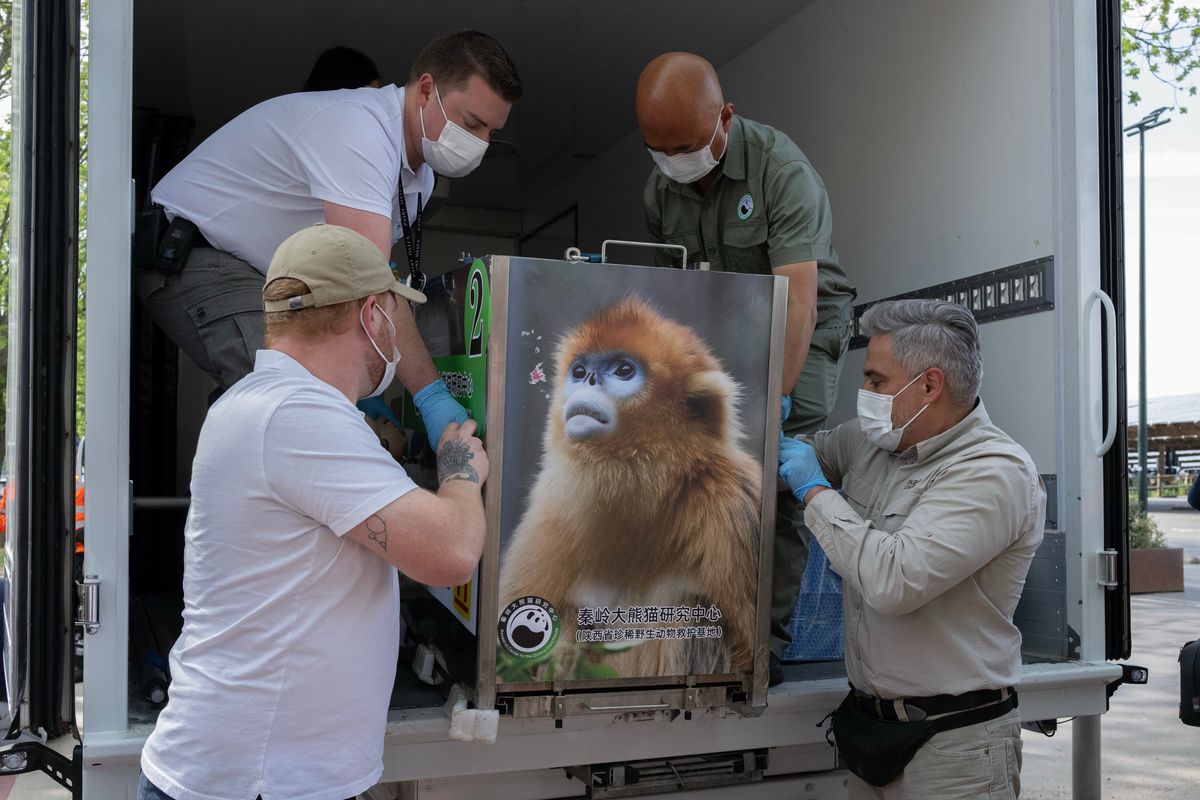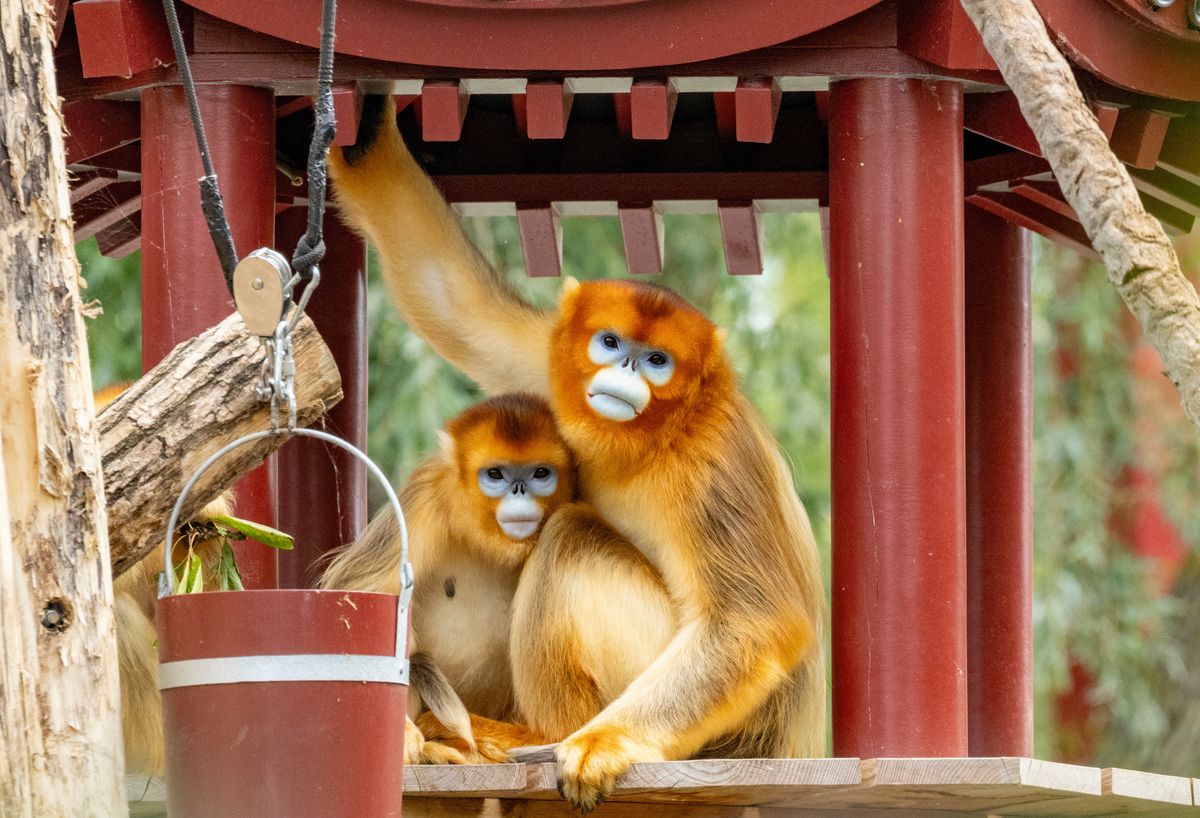With their distinctive shaggy orange manes, pale blue faces and dense fur covering their hands and feet, it’s hard to mistake China’s endangered golden snub-nosed monkeys for any other animal.
These rare and charismatic monkeys, unique to the frigid mountains of central China, have recently joined the country’s famous pandas as furry envoys to zoos in Europe for the first time — on loan for 10 years from the same government-overseen group that coordinates official panda exchanges.
As with “ panda diplomacy,” some observers cheer new opportunities for scientific and conservation collaboration, while others raise concerns about the welfare of individual animal ambassadors transported around the world.
Leaping among red and gray-tiled roofs
Three golden monkeys arrived at France’s Beauval Zoo in the city of Saint-Aignan this April, following an agreement to mark the 60th anniversary of the establishment of diplomatic relations between the People’s Republic of China and France.
Another trio of golden monkeys arrived at the Pairi Daiza zoo in Hainaut, Belgium, in May. The zoo distributed Belgian and Chinese hand flags to visitors on the day the monkeys arrived.
After a monthlong quarantine, the two sets of monkeys made their public debuts. So far, they appear to be in good health, according to the two zoos, adapting to new climates outside Asia for the first time.
At Pairi Daiza, the habitat enclosure for Liu Yun, Lu Lu and Juan Juan includes traditional Chinese gazebos with red columns and gray-tiled roofs, where the monkeys spend much of their time jumping between logs and rope ladders and scrambling over roofs.
“The diplomatic aspect comes from this cultural awareness,” said Pairi Daiza spokesperson Johan Vreys.
The hope is to build longstanding scientific exchanges between the zoos and Chinese authorities, said Anaïs Maury, the communications director for the Beauval Zoo.
The zoo is in discussions with China to launch joint research and conservation programs “similar to those already in place for other emblematic species like pandas,” Maury said.
A short history of modern animal ambassadors
Both giant pandas and golden snub-nosed monkeys are endangered animals that are unique to China and they can only be moved outside the country with approval from the central government, said Elena Songster, an environmental historian at St. Mary’s College of California.
While both species are considered national treasures, only monkeys have deep roots in Chinese art and culture, appearing in countless paintings and as characters in classic literature, including the wily Monkey King in the 16th century novel “Journey to the West.”
When pandas stepped, rolled, scratched and stumbled onto the world stage in recent decades, they quickly became symbols of modern China — in part to due to their own “cuddly cuteness” and deft diplomatic presentation, said Susan Brownell, a China historian at the University of Missouri, St. Louis.
The original soft power couple from post-war China was a pair of giant pandas, Ping Ping and Qi Qi, sent to the Soviet Union in 1957 to celebrate the 40th anniversary of the October Revolution, which led to the establishment of the world’s first Communist state.
In 1972, a pair of pandas was sent to the U.S. for the first time, following President Richard Nixon’s historic visit to Beijing. In 1984, China switched from gifting pandas to loaning them.
Following outcry from animal-rights activists, China ended the practice of short-term loans and began longer leases, usually around a decade. In this arrangement through the China Wildlife Conservation Association, part of the money that an overseas zoo pays annually to China must be earmarked for habitat conservation or scientific research to benefit the species.
Still, what benefits a species may not be beneficial to an individual animal. Transporting animals over long distances and sending their offspring back to China, as the agreements require, may highly stress animals, said Jeff Sebo, an environmental and bioethics researcher at New York University.
“Animal health and welfare matters,” he said, “not just for geopolitical or strategic aims.”
Habitat conservation in China
Within China, the golden snub-nosed monkeys today live across a swath of central and southwestern China that includes parts of Sichuan, Shaanxi, Gansu and Hubei provinces.
At the Shennongjia National Park in Hubei, conservation efforts since the 1980s have helped increase the region’s population threefold to around 1,600 monkeys today, said Yang Jingyuan, president of the Academy of Sciences at the park.
It’s unclear exactly how to evaluate the diplomatic track record of furry ambassadors.
Still, in an era of rising global tensions, “I think pandas are a really useful entryway,” said James Carter, a China historian at Saint Joseph’s University in Philadelphia. “Pandas open up an opportunity for people to think something positive about China — they’re cute, they don’t do anything bad.”
The golden snub-nosed monkeys now at zoos in France and Belgium are so far the only ones outside of Asia.
“China’s golden snub-nosed monkeys aren’t globally iconic yet,” said Brownell, “but there may be potential for them to be in the future.”
___
Associated Press video producer Wayne Zhang, in Shennongjia National Park, contributed to this report.
___
The Associated Press Health and Science Department receives support from the Howard Hughes Medical Institute’s Department of Science Education and the Robert Wood Johnson Foundation. The AP is solely responsible for all content.
By CHRISTINA LARSON
AP Science Writer

